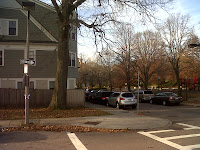The Occupy protests have become the litmus test of the left: Are you willing to go so far to support public encampments and a relatively socialist agenda? Sure, President Obama has adopted a more populist tone since September, which was about the same time the protests began. Yet the power base of the Democratic Party has essentially the same composition as before -- Wall Street + unions + the well-educated professional class -- and the party's approach to federal politics hasn't changed much, either. The mayors of big cities, nearly all progressives, also weren't able to cope with peaceful protest camps in their midsts. They chose to clear them, even when they were probably the only group of politicians who could've have gotten away with accommodating and managing them.
I'm not sure I can hurdle over the bar that the Occupy movement set. I was enthused that my generation finally mounted a sustained protest against something (even if I stayed at my desk job each day). We certainly had enough content to merit one, though maybe not quite as much as in the halcyon '60s, when there were the civil rights and anti-Vietnam War movements. But, as Ross Douthat pointed out in a recent column, we could dramatically increase taxes on the 1 percent and/or forgive student loan debt, but ... then what? We'd collect more taxes and not more interest without thinking about the structural changes that are needed to lift the U.S. out of its three-year-old morass. More taxes aren't a good answer if they're simply used to support a status-quo system that isn't thinking about systemic change. What about increasing the capital gains tax, reinstating the Glass-Steagall Act, instituting a gasoline tax, creating a more flexible immigration policy, ending public pension systems or increasing the Social Security age, among other possibilities?
Really, the person who benefited the most from the Occupy movement was Jerold Kayden, an urban planning professor at Harvard. Turns out the park Occupy Wall Street chose is a privately owned public space and one of Kayden's academic specialties is New York's privately owned public space. As I listened to his lecture about this last spring, as he told our class about his exhaustive cataloguing of these spaces and the advocacy group that he formed for them, I could only think, This sounds like a bit much, no? (Though I realize academics across all disciplines have made more ado about less before.) Then I saw and heard his name everywhere for a month. Damn.










.jpg)






